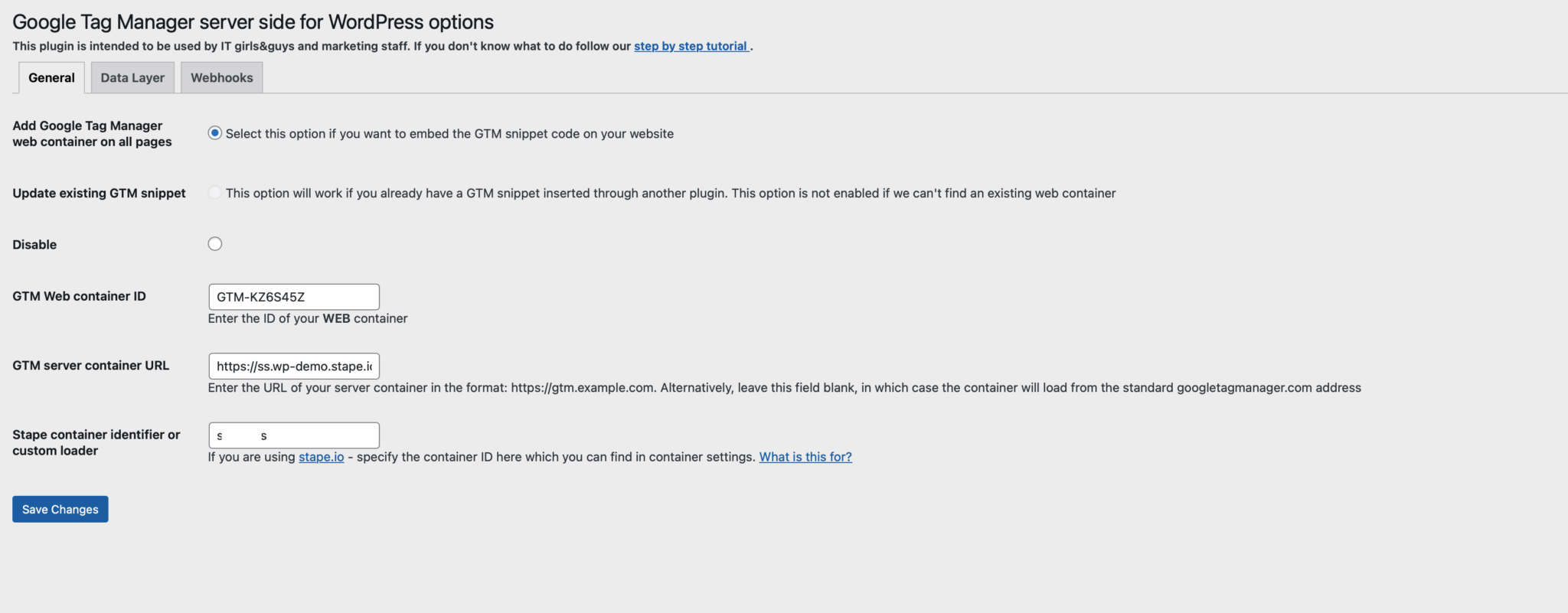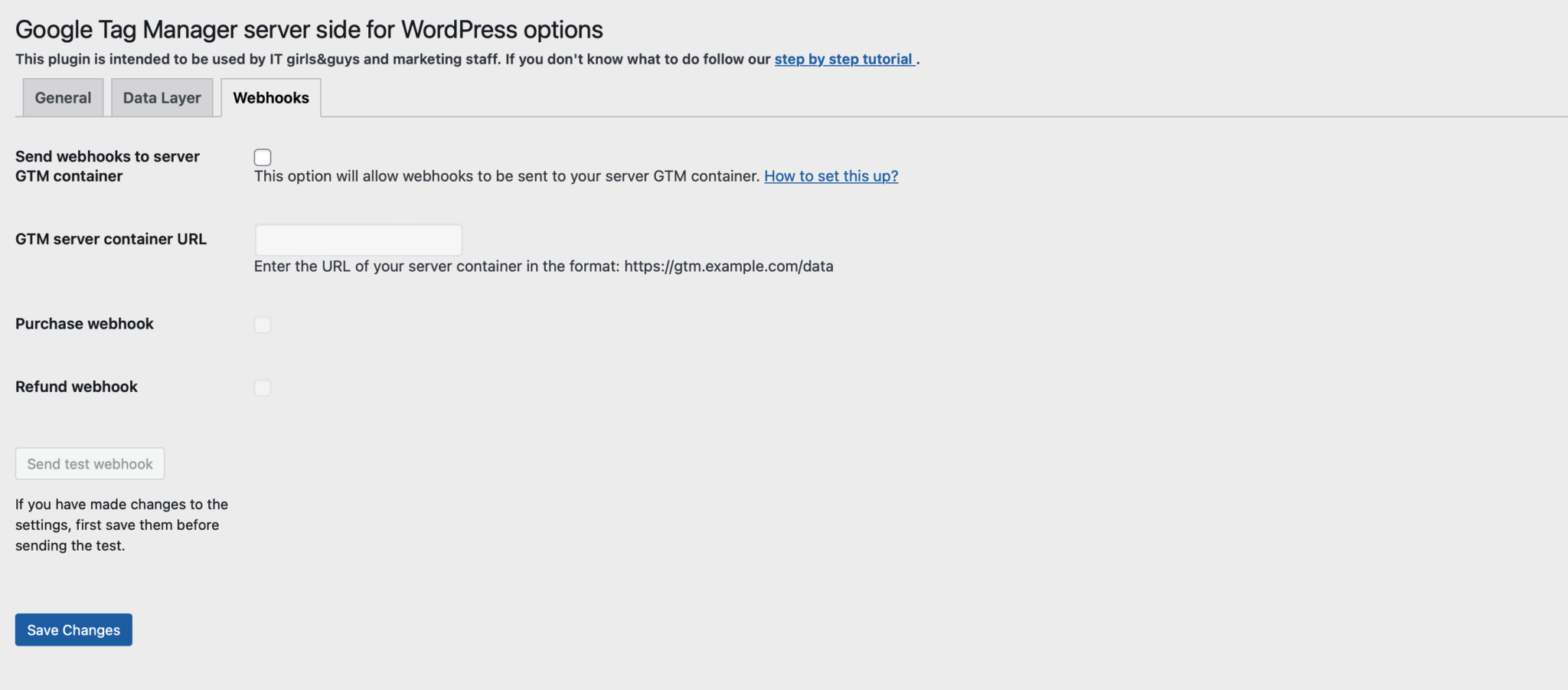- Client: stape.io (server-side GTM platform)
- Product: GTM Server Side WordPress plugin
- Distribution: WordPress.org, 9,000+ active installations
Goal: Give WordPress teams accurate, privacy-resilient tracking while keeping pages fast
The problem
WordPress teams were stuck between two sub-optimal paths:
- Client-side tags that ad blockers / ITP quietly break.
- Server-side setups that demand developer time, custom scripts, and fragile workarounds across checkout flows in WooCommerce.
Result: missing events, short cookie lifetimes, inconsistent e-commerce data, slower pages, and endless “ping the devs.” If you’ve ever searched “GTM plugin for WordPress”, you’ve likely felt this gap: most results solve basic insertion, not durable, server-side measurement.
What we built and why it’s different
GTM Server Side by stape.io is a drop-in GTM plugin that gets you to reliable server-side tagging in minutes.
- GTM everywhere, conflict-free. Adds the GTM script on every page or coexists with any theme/plugin that already inserts it.
- Custom loader (stealth mode). Makes GTM/GA tracking far less visible to ad blockers and tracking prevention.
- No extra JS library. Events go to the server-side GTM container without client-side bloat, preserving Core Web Vitals.
- Data Layer, done right. Standardized e-commerce events and user data across templates.
- Webhooks included. Ship events to CRMs, CDPs, or automation tools without new code each sprint.
Many plugin WordPress tutorials stop at “paste your container ID.” We engineered for resilience: a consistent Data Layer, stealth loading, and performance by default.
Interface



Business wins
- Longer attribution windows. Custom domain on sGTM extends cookie lifetime.
- Higher data completeness. Fewer blocked hits with the custom loader means more accurate tracking.
- Less developer overhead. GTM + e-commerce + user data + webhooks without hand-wiring.
- Speed preserved. No extra client library keeps pages quick and Core Web Vitals healthy.
How we engineered it
- Compatibility first. Designed to coexist with existing GTM insertion. No lock-in, no breakage.
- Performance by design. Event delivery to sGTM without render-blocking JS.
- Opinionated data model. A standardized Data Layer for store actions and user context reduces drift and speeds up debugging.
- Simple, testable defaults. Five minutes to “events flowing” was a product requirement, not a nice-to-have.
About plugins details, the setup is essentially: point to your tagging server URL, enable the custom loader, verify purchase/cart/user events in the Data Layer, and (optionally) forward webhooks to your CRM/CDP.
Results
- 9,000+ active installs on WordPress.org — adoption with minimal hand-holding.
- Teams launched server-side GTM without refactoring themes, bolting on libraries, or chasing missing events.
- E-commerce tracking became predictable: same Data Layer shape, every time.
Who benefits most
- E-commerce stores that need reliable purchase/cart/user events with a clean Data Layer.
- Performance-sensitive brands that refuse to trade speed for measurement.
- Analytics and growth teams standardizing on server-side GTM and first-party data.
Why it worked
Together with stape.io we optimized for three things WordPress teams actually feel day to day: simplicity, speed, and resilience. We made the right parts invisible — the loader, the plumbing, the normalization — so the numbers simply add up.
What’s next
If you’re planning deeper analytics or e-commerce integrations on WordPress and want scale without support fatigue, this is a good blueprint. For broader context on the engineering practices behind builds like this, see our notes on WordPress development — architecture, performance budgets, and data-layer hygiene.










